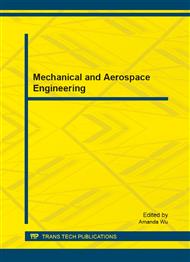p.561
p.568
p.573
p.578
p.583
p.588
p.592
p.603
p.609
Modeling of Urea-Water Solution Injection Spray in SCR System
Abstract:
To control the emissions from the diesel engines of modern automobiles, it requires the development of adequate and advanced exhaust gas aftertreatment devices. Selective Catalytic Reduction (SCR) is a method that can be used in mobile diesel engine aftertreatment systems to reduce harmful NOx emissions. Due to the toxicity and handling problems of ammonia, currently injection of a liquid Urea-Water Solution (UWS) into the exhaust stream approach is used. The water evaporates and the urea undergoes thermal decomposition producing ammonia that reacts with the NOx in the exhaust gas inside a SCR catalyst to produce nitrogen and water vapor. This work presents the study of UWS injection spray using commercial available CFD code, Fire v8.3. The evaporation of water from a single droplet of UWS is investigated theoretically and droplets are treated with Lagrangian particle tracking. Simulation study at different exhaust gas temperatures and injector locations is carried out and compared with experimental values. Thus, the present study results predict the local distribution and the conversion of the reducing agent.
Info:
Periodical:
Pages:
583-587
Citation:
Online since:
November 2012
Authors:
Keywords:
Price:
Сopyright:
© 2012 Trans Tech Publications Ltd. All Rights Reserved
Share:
Citation:


